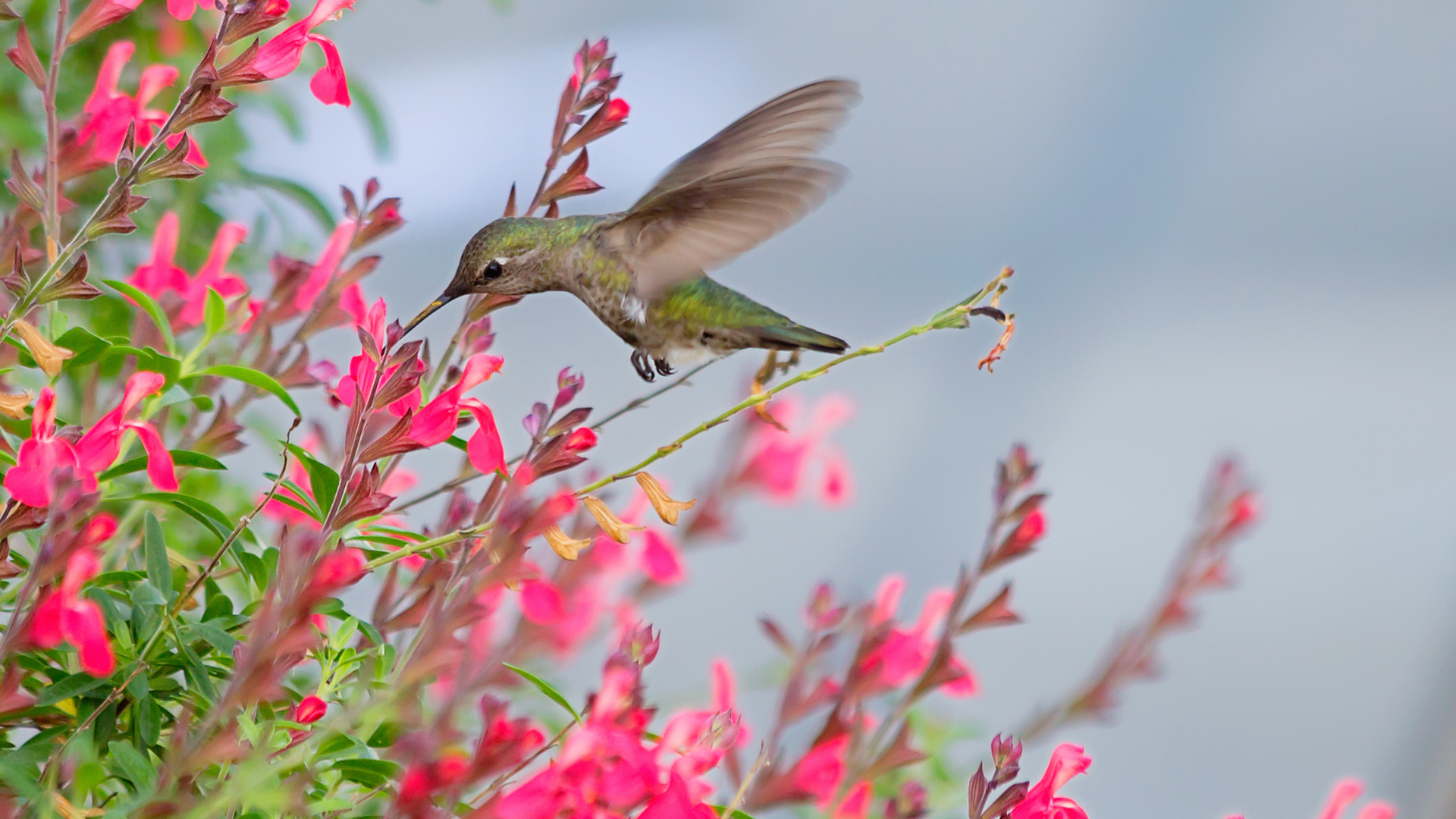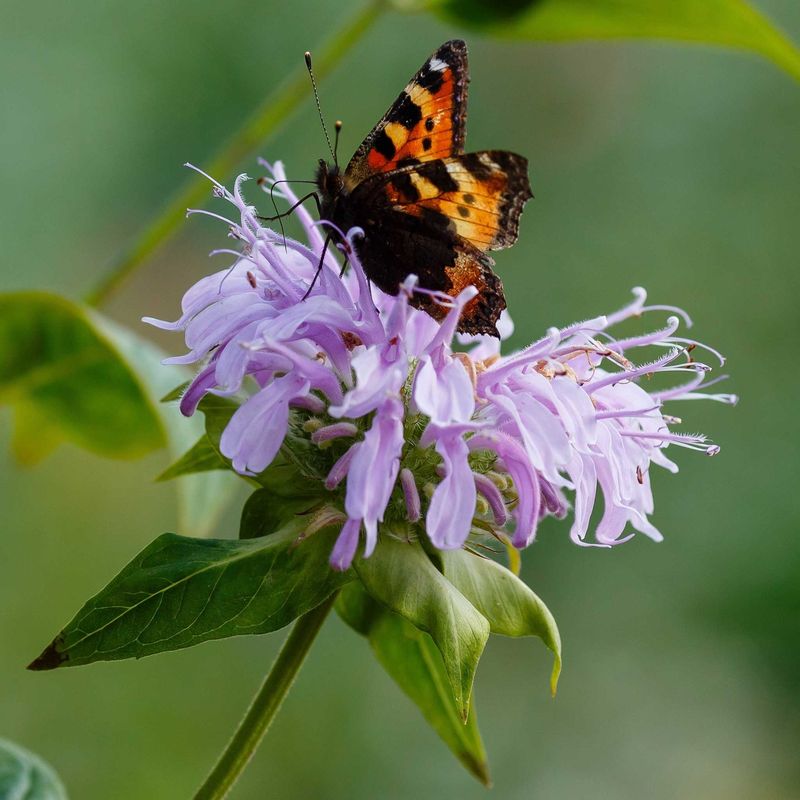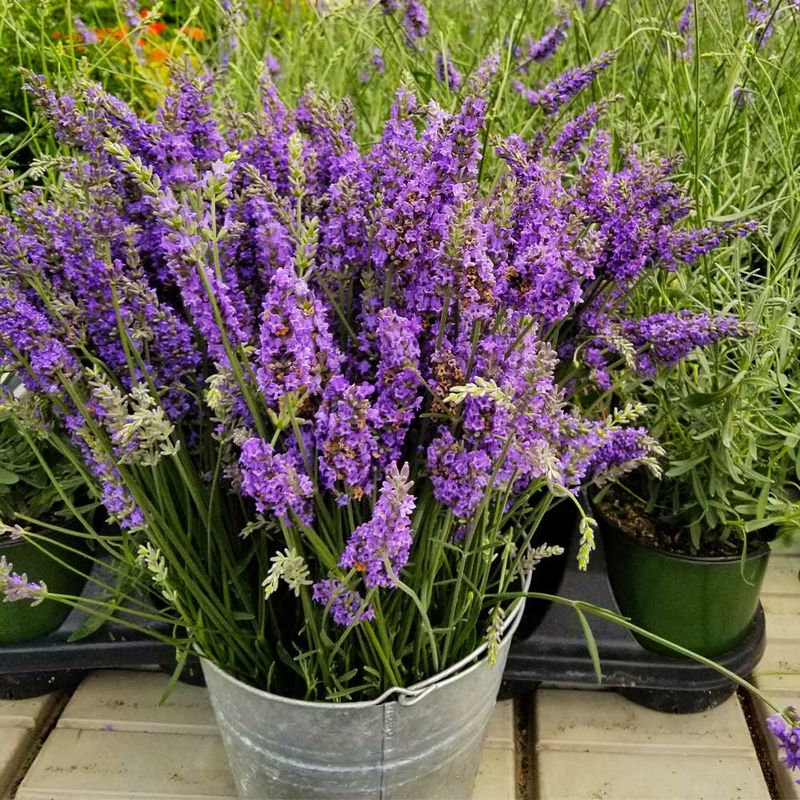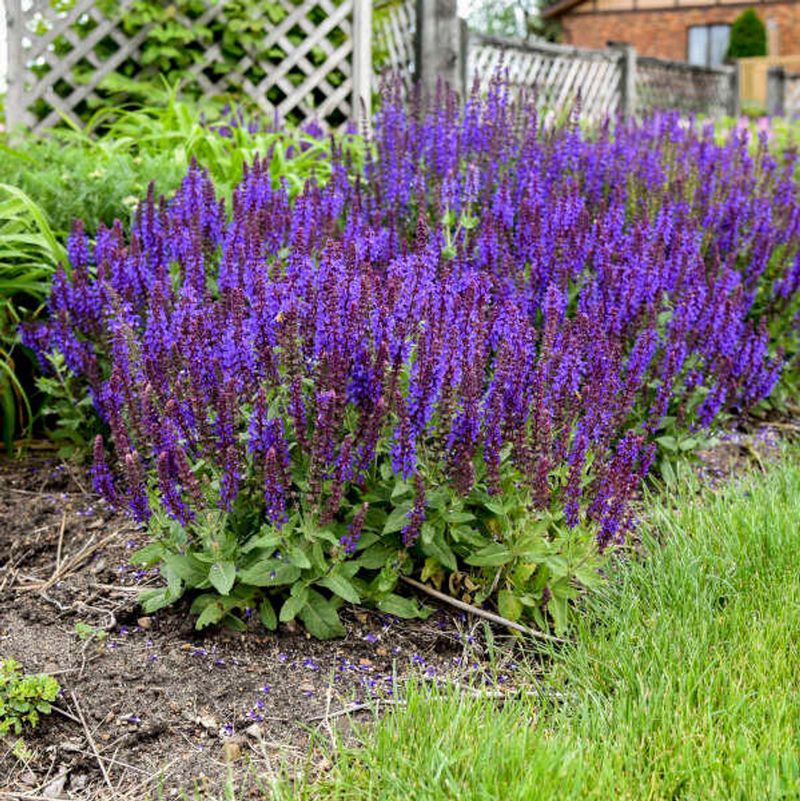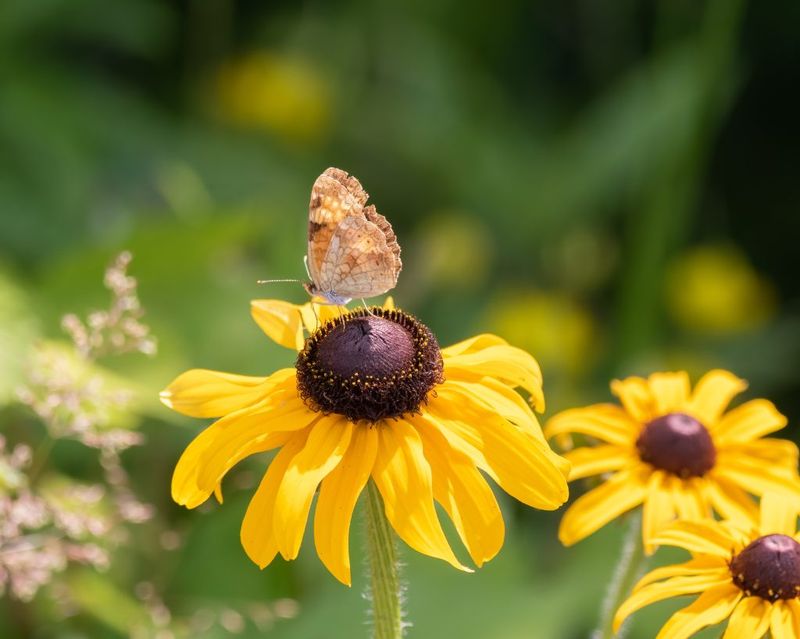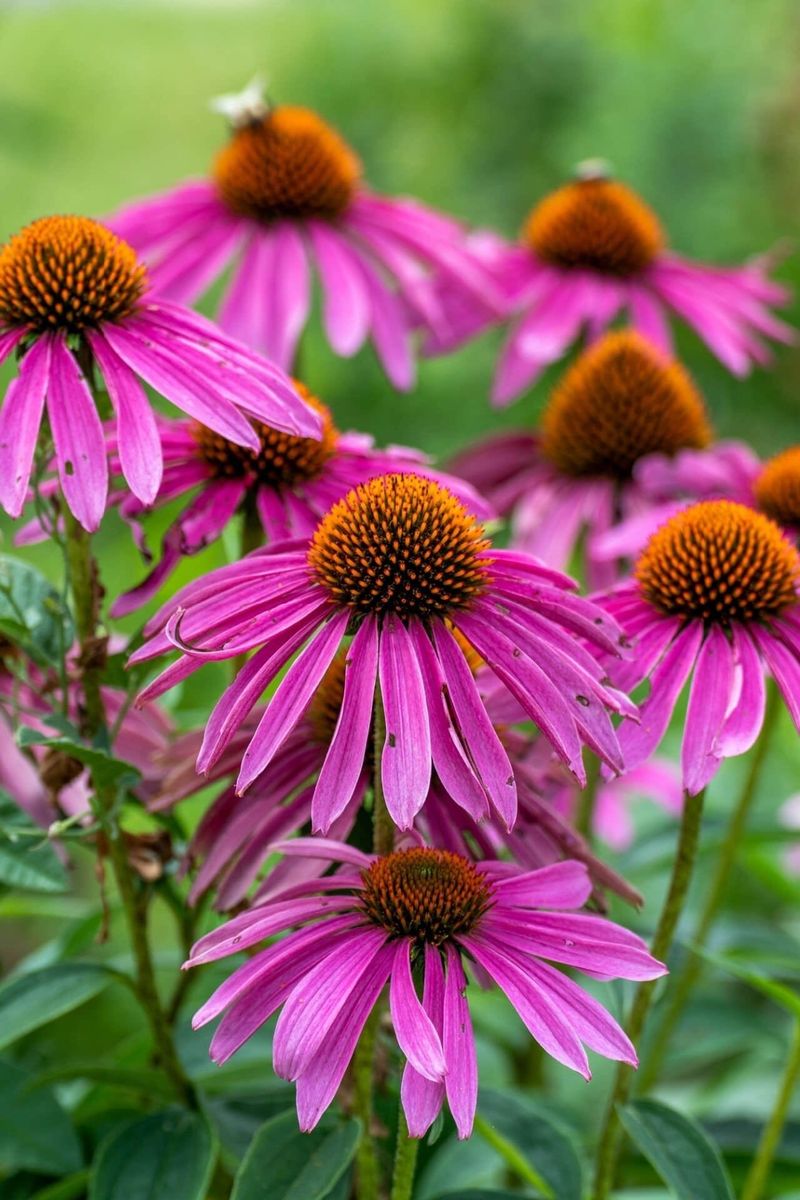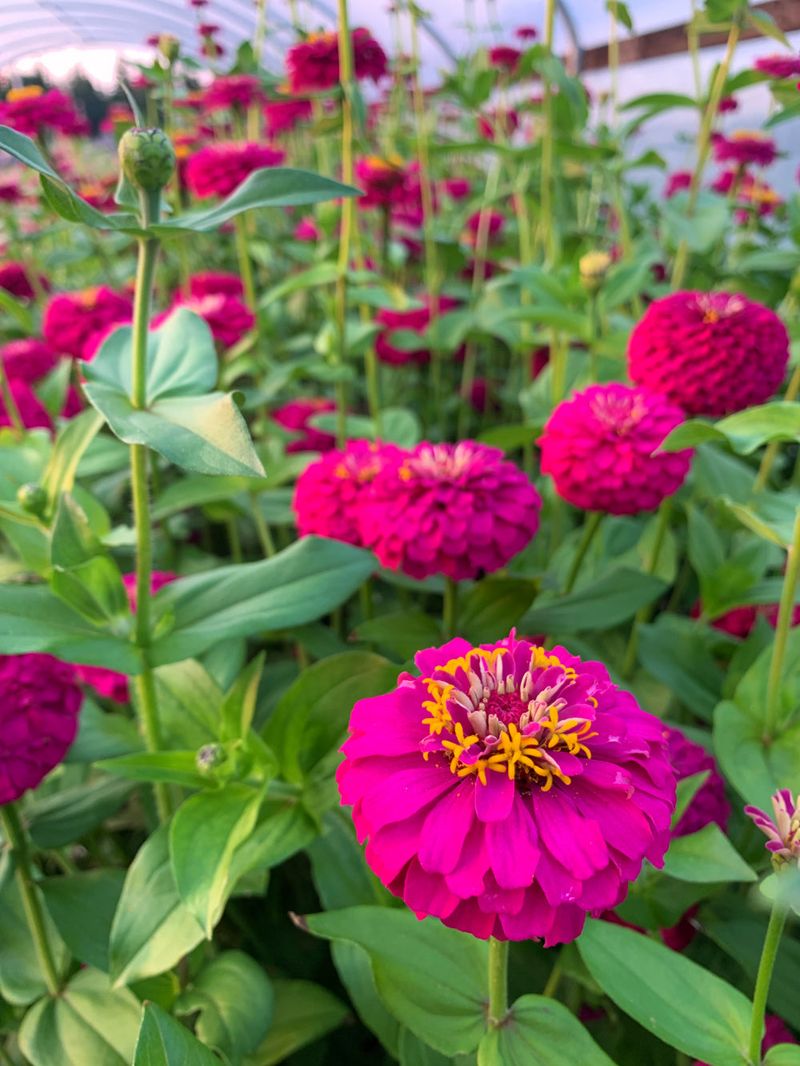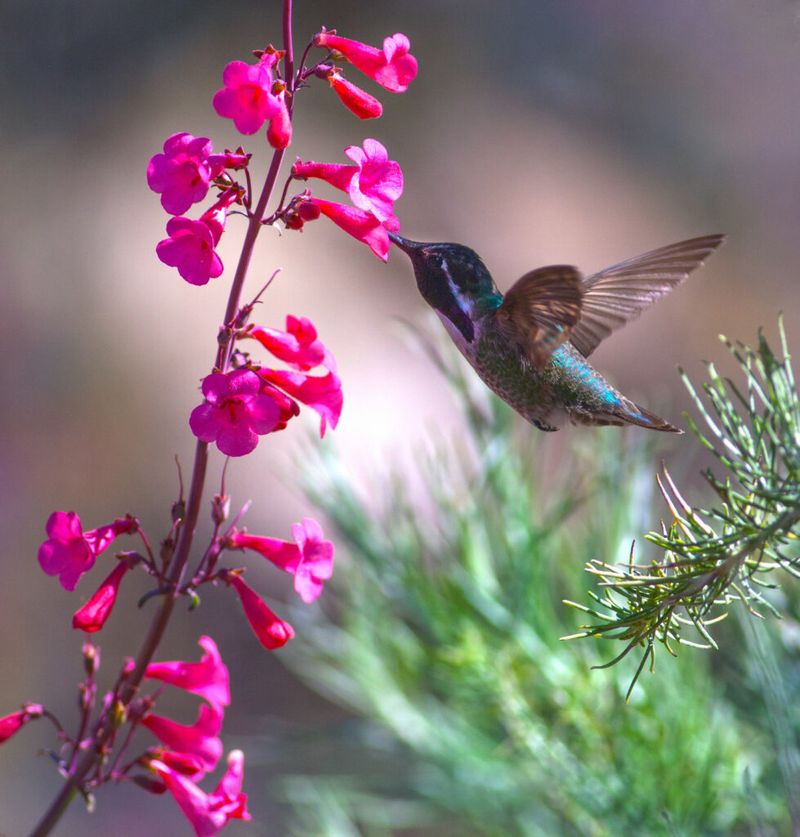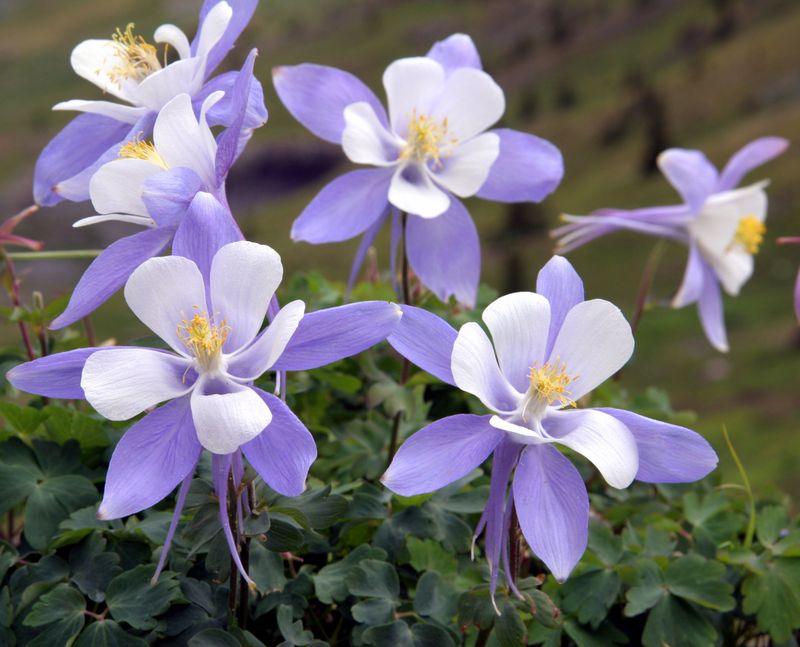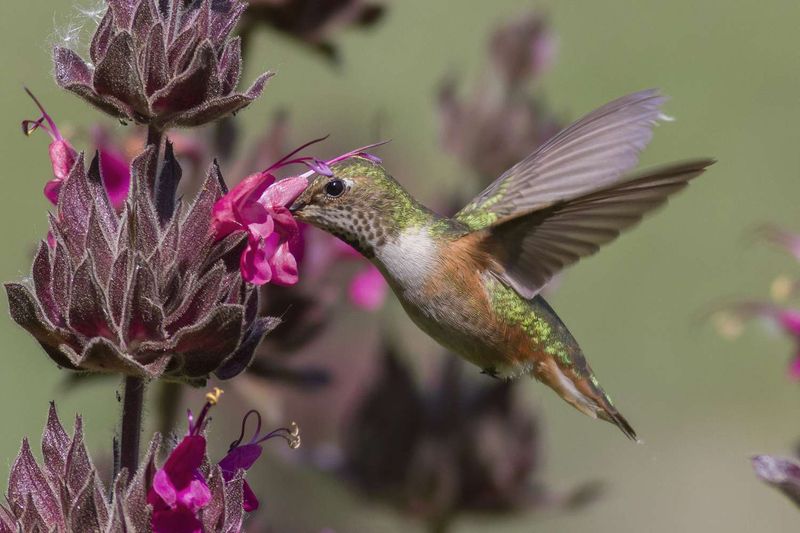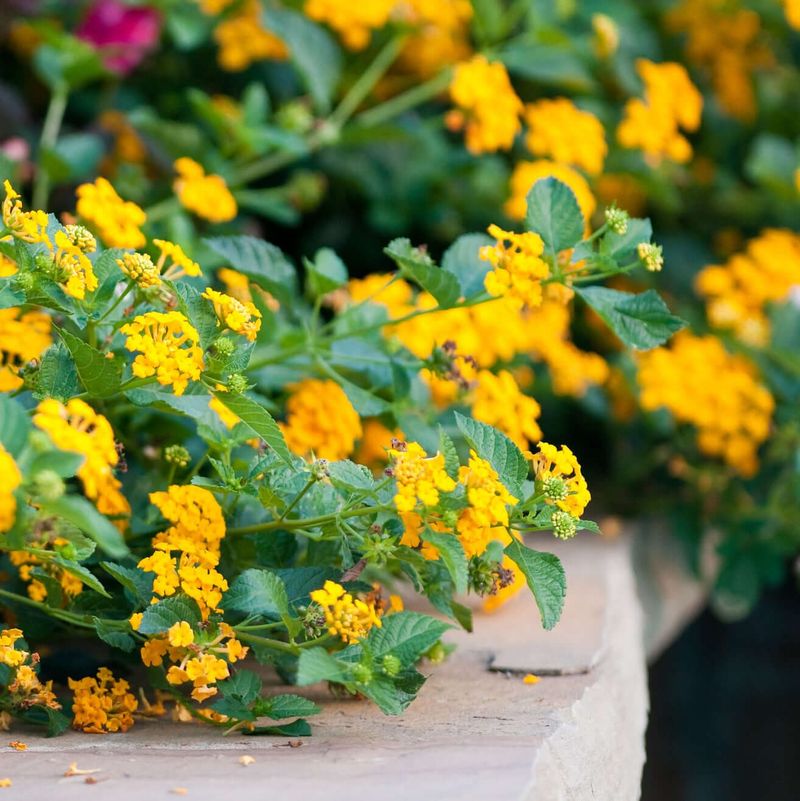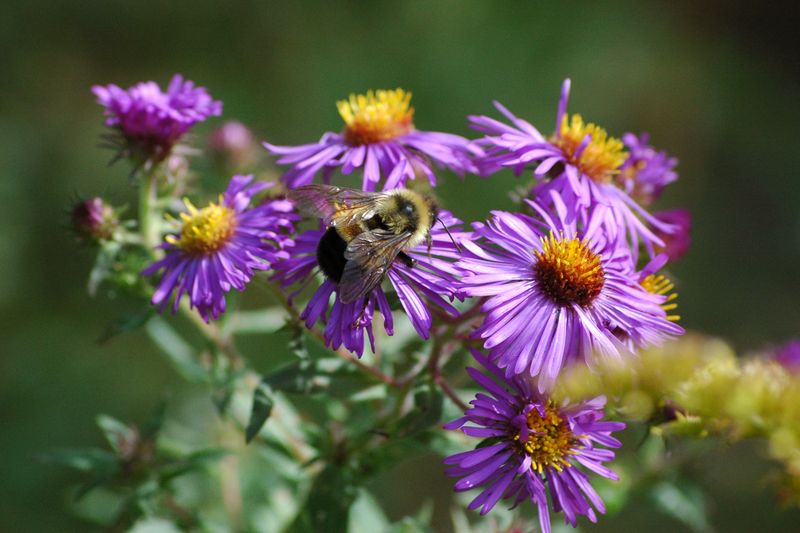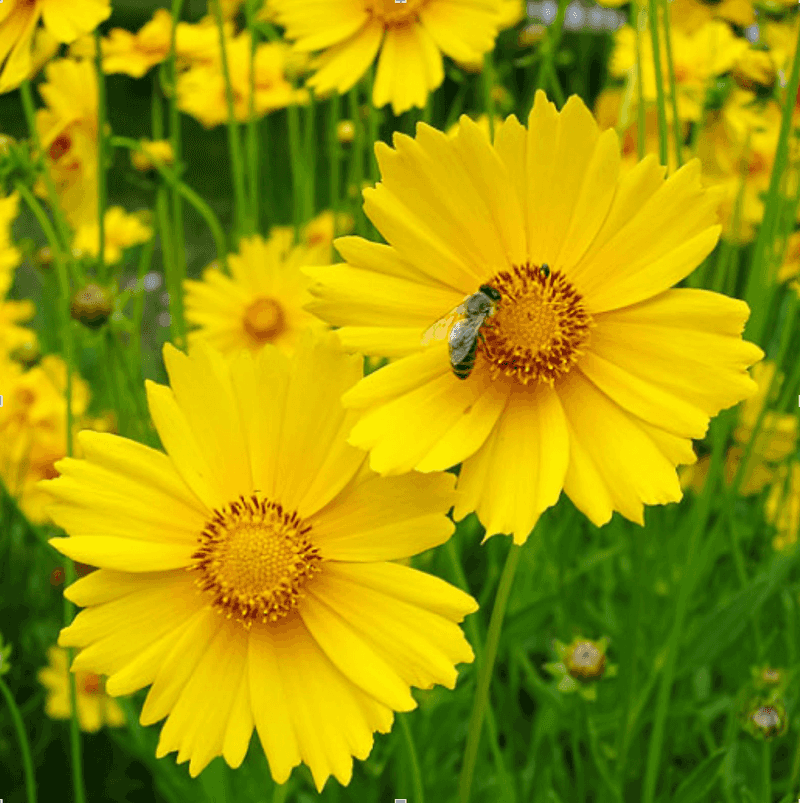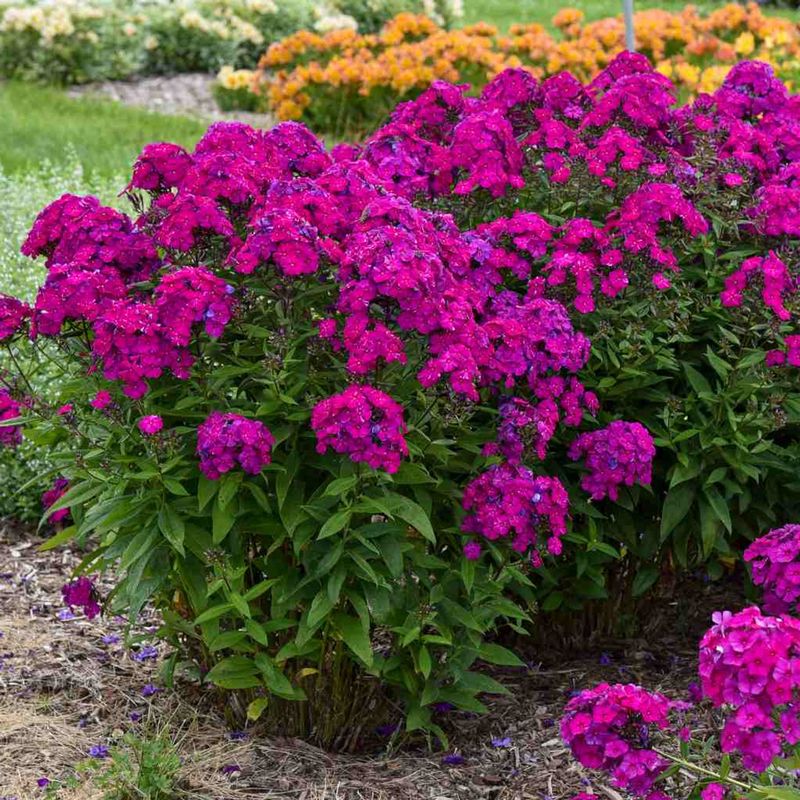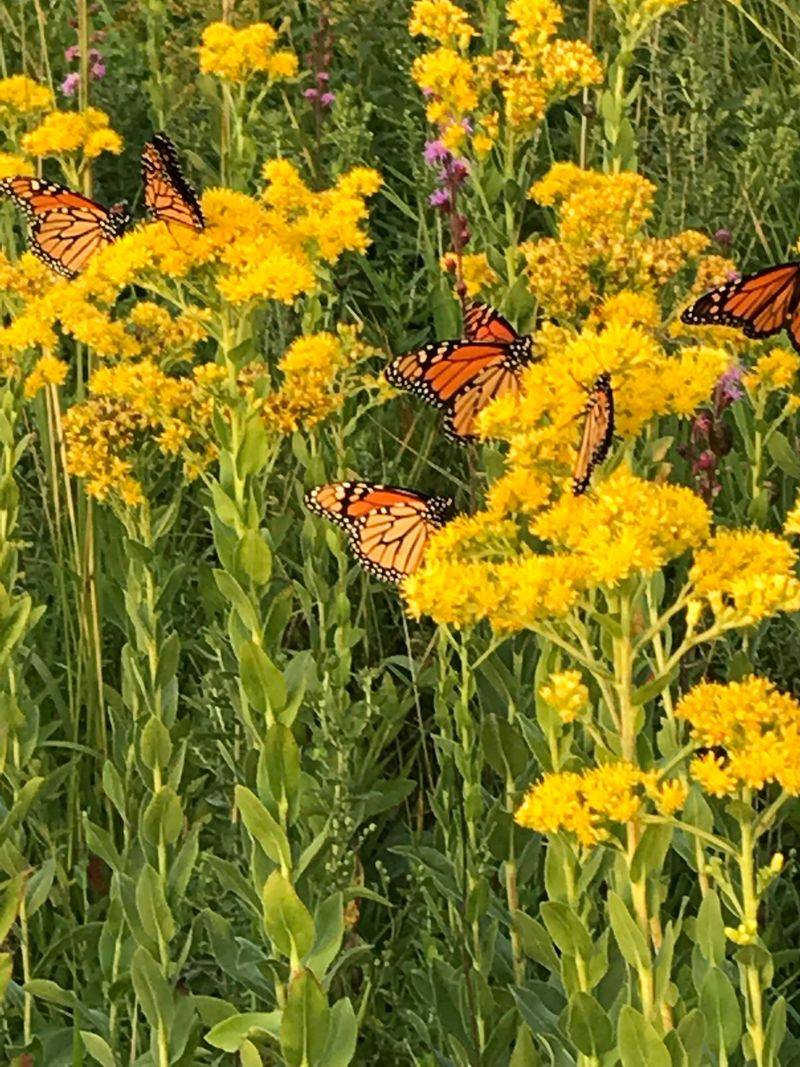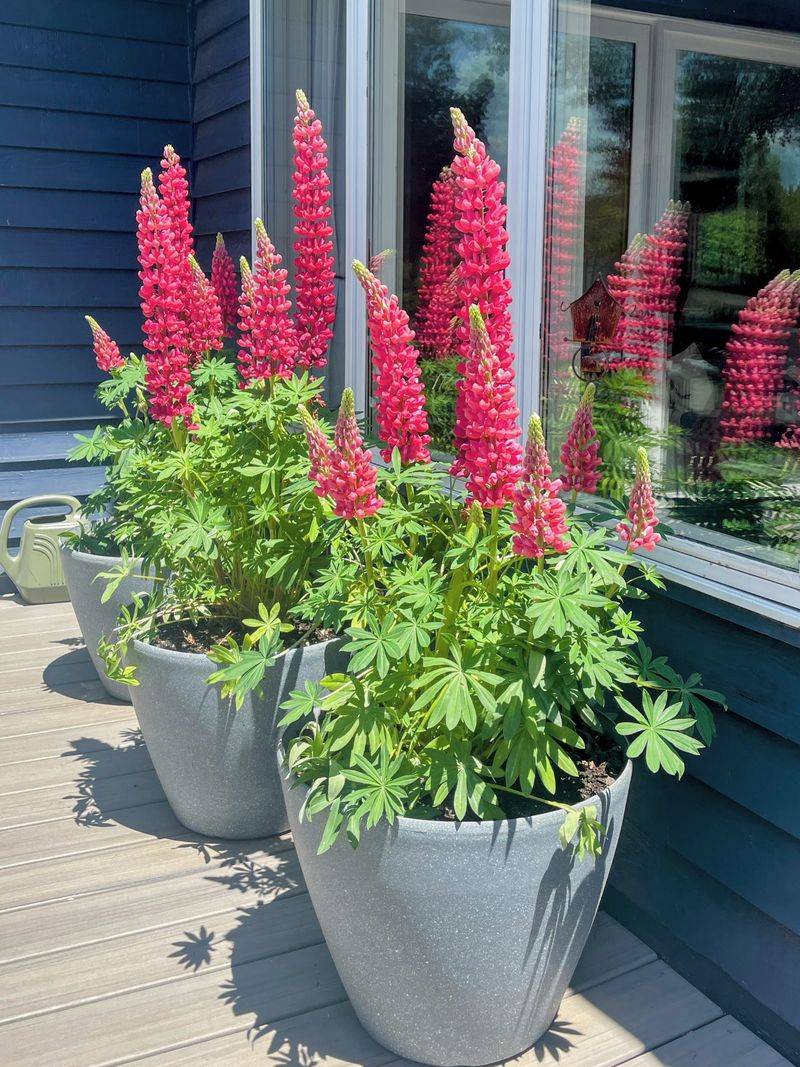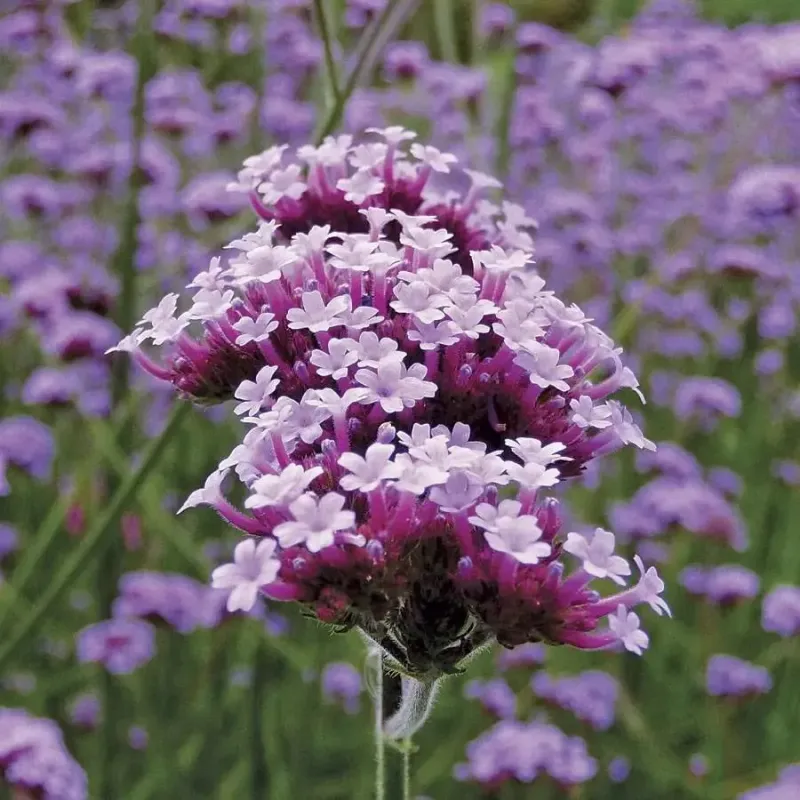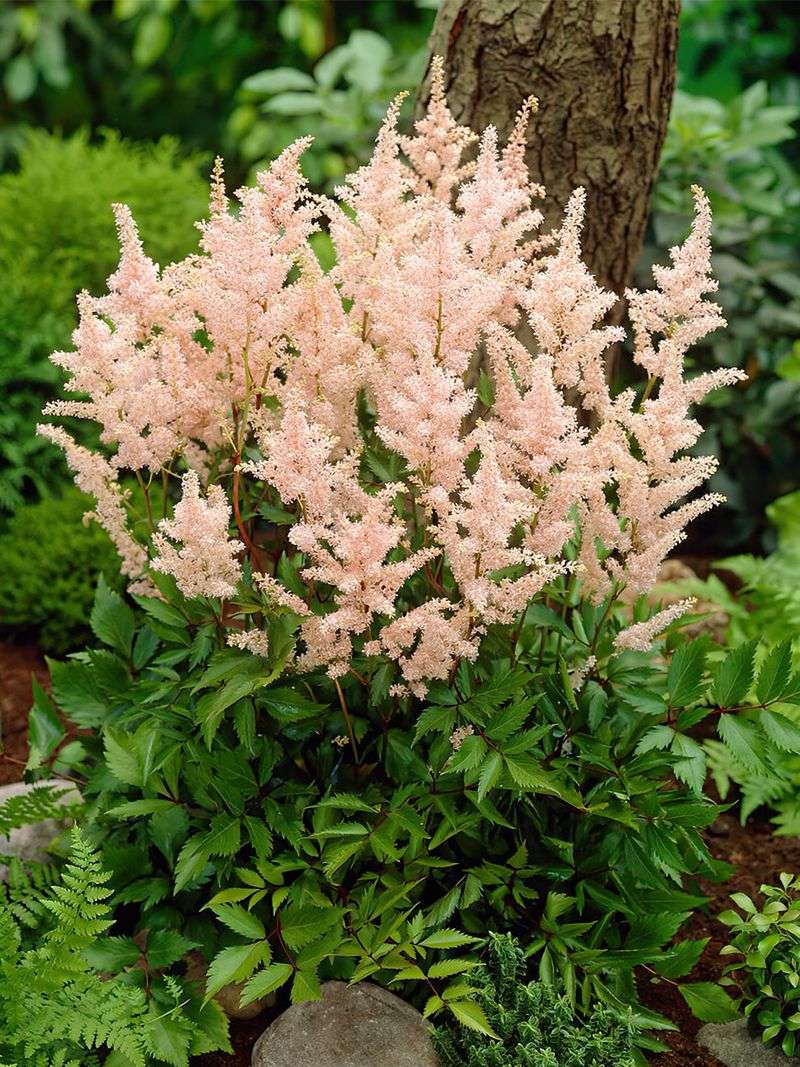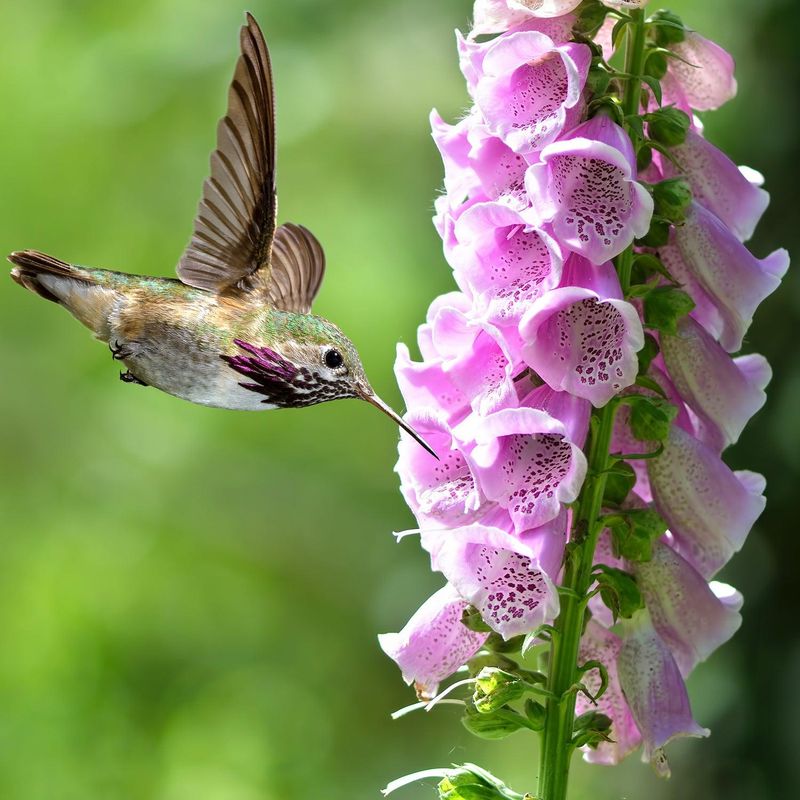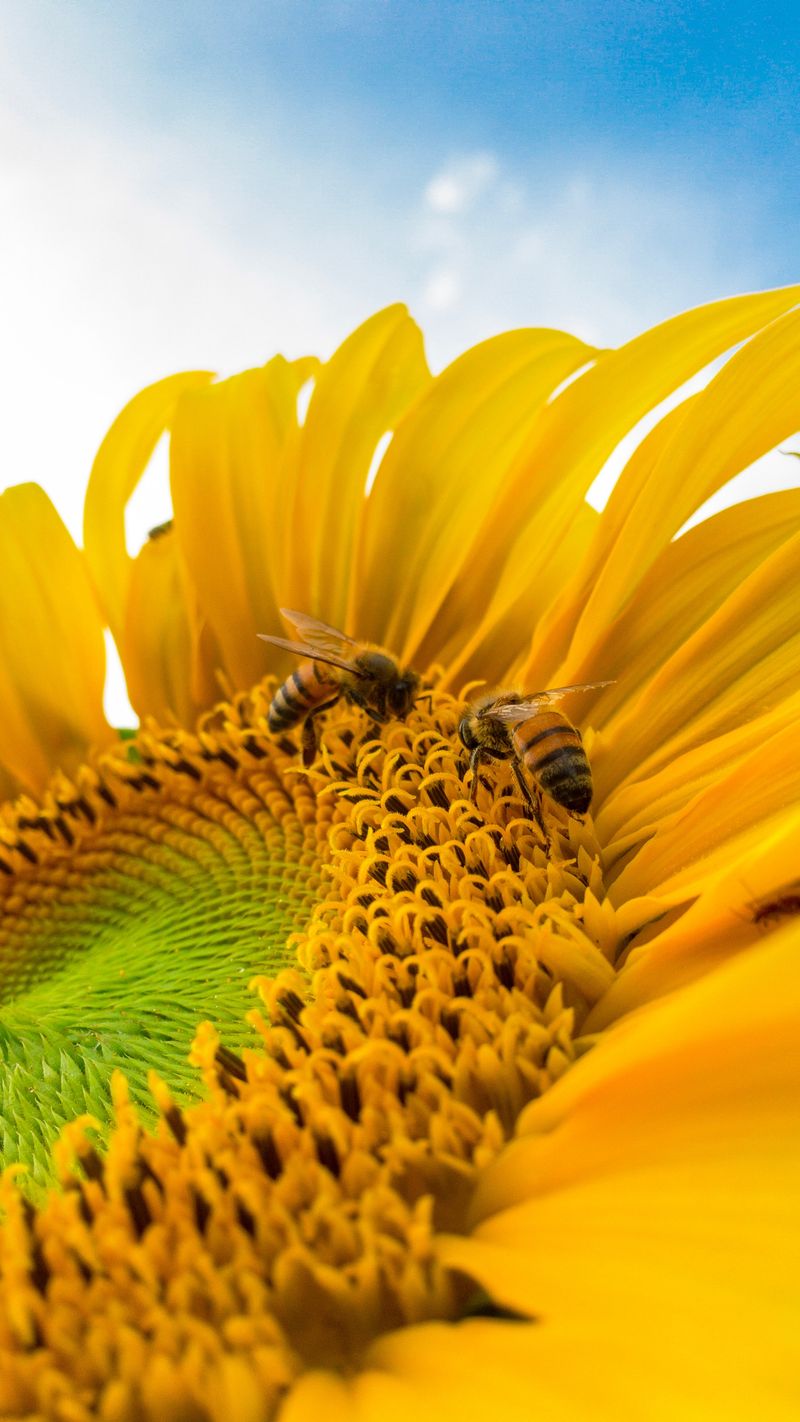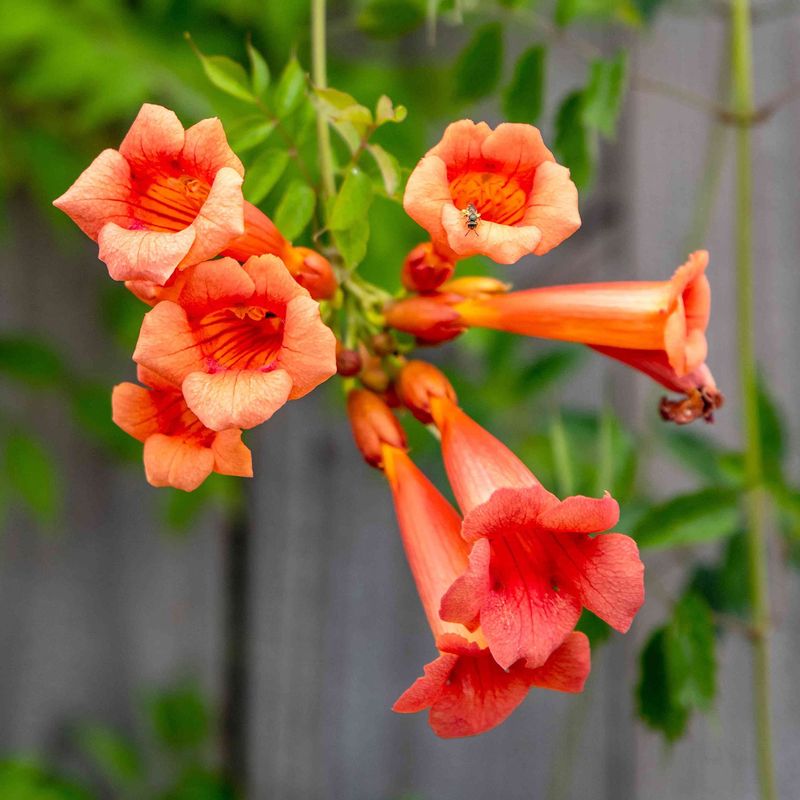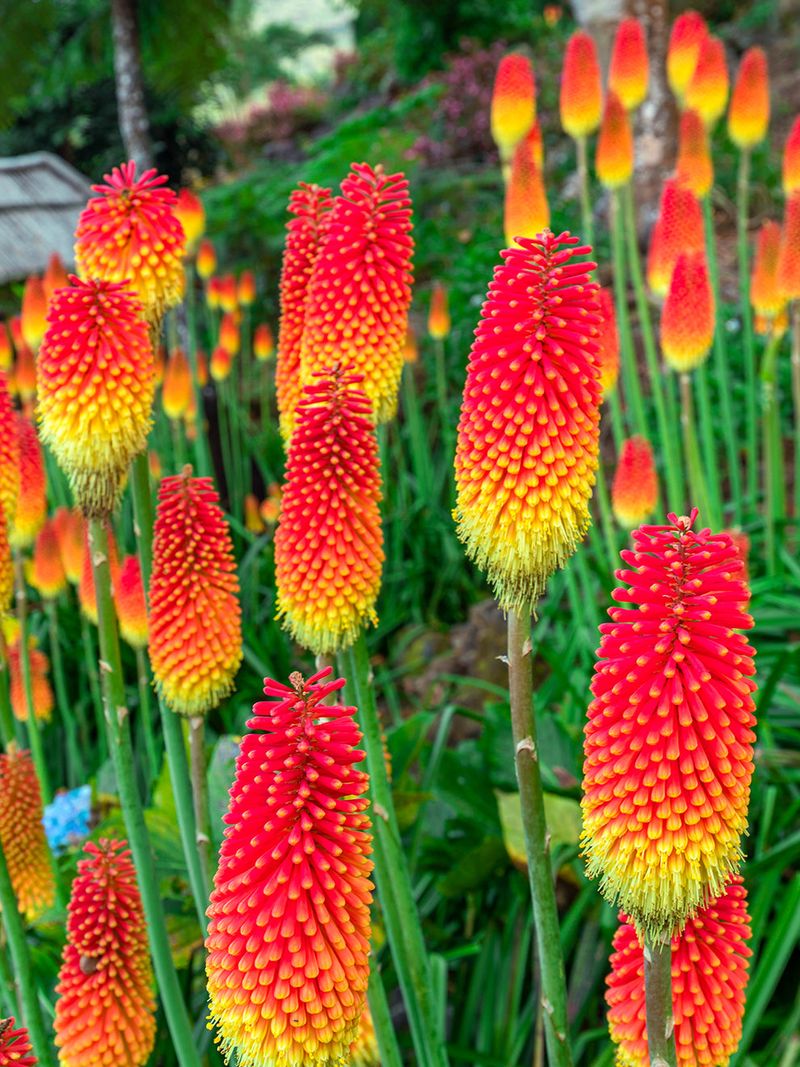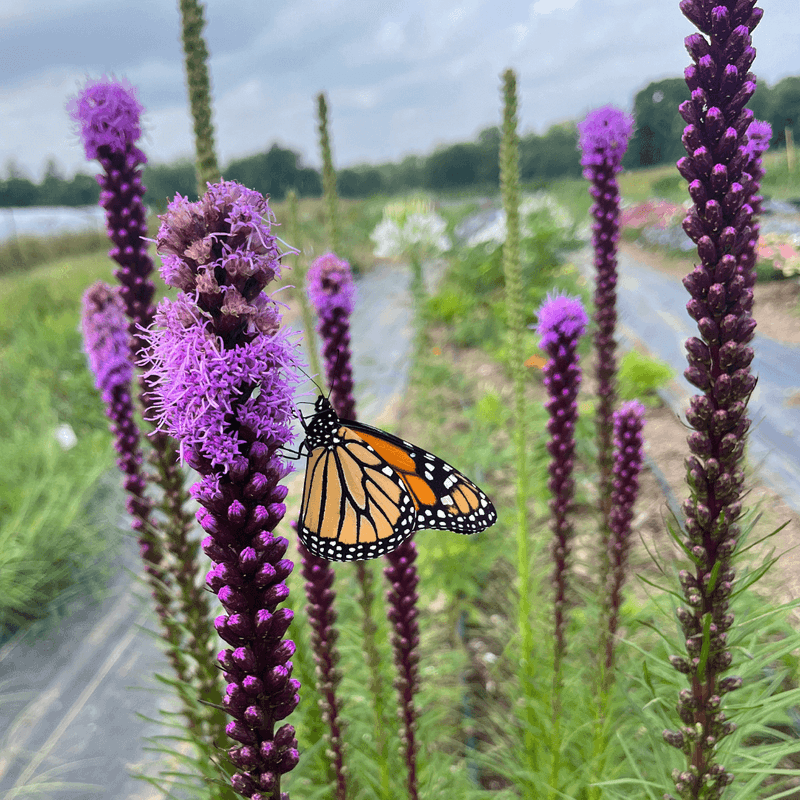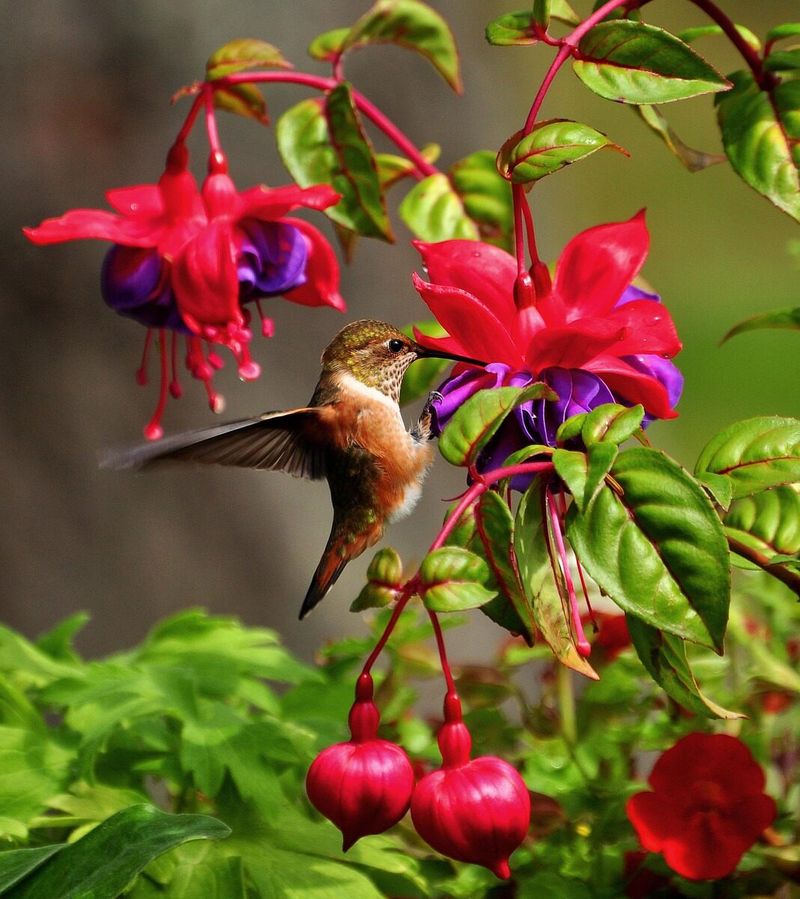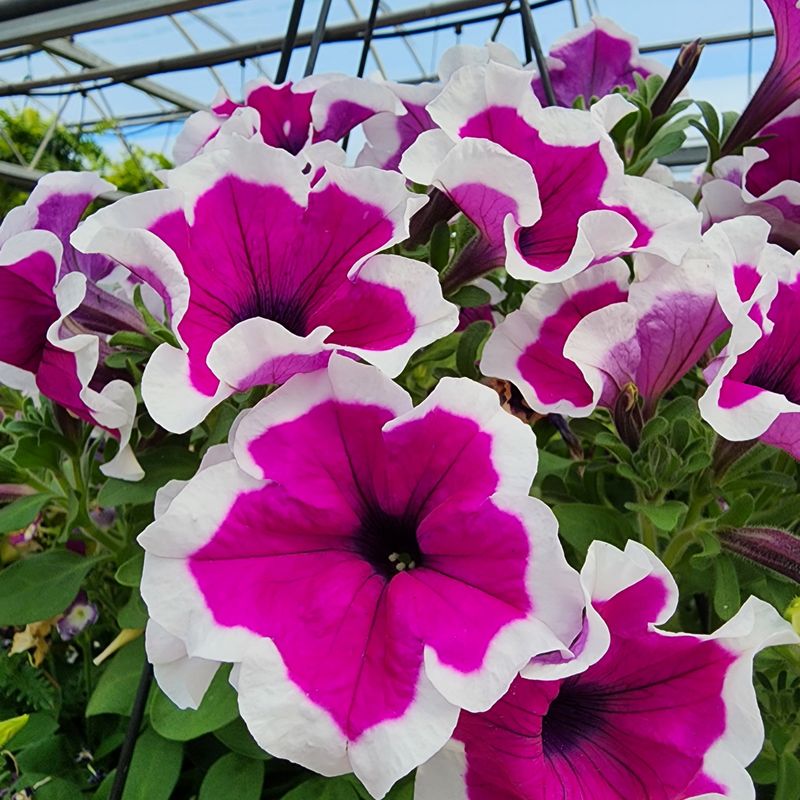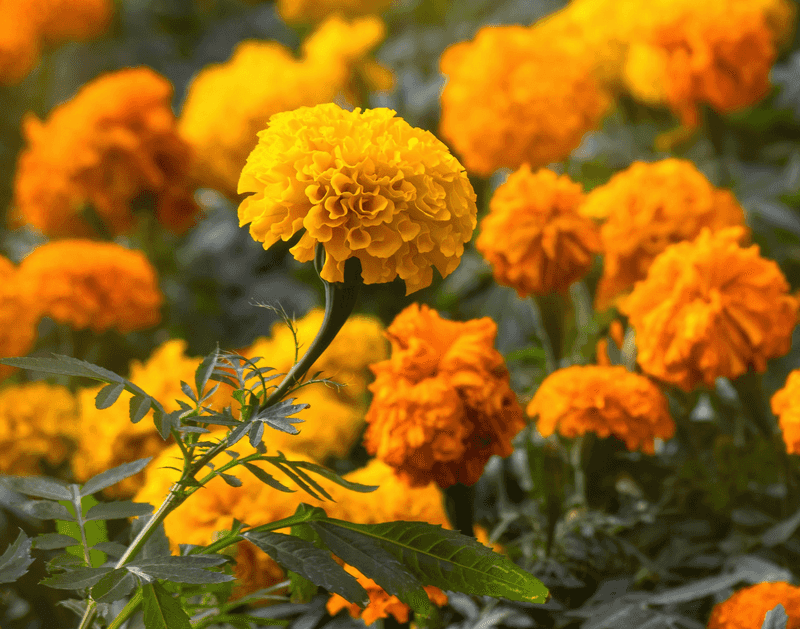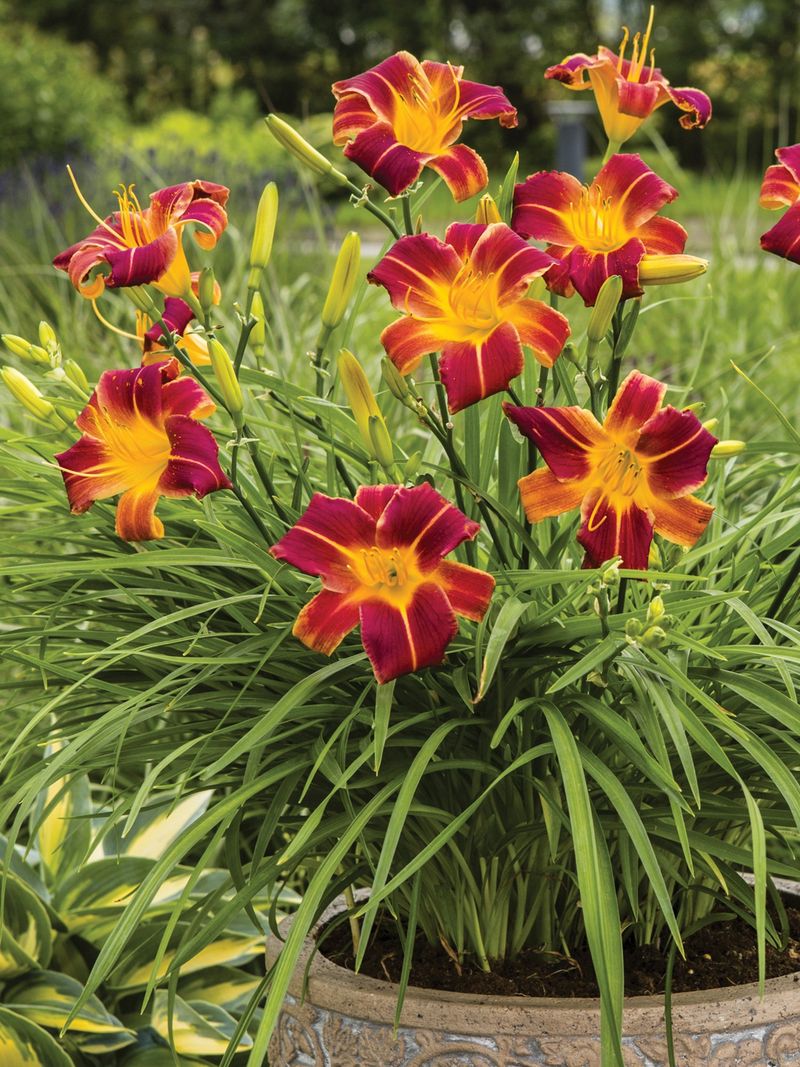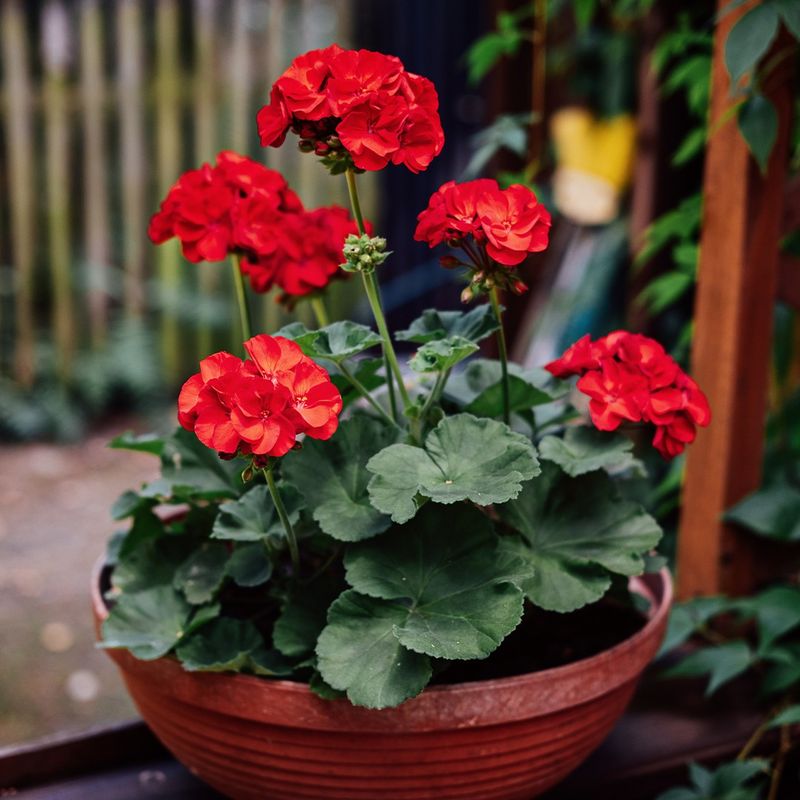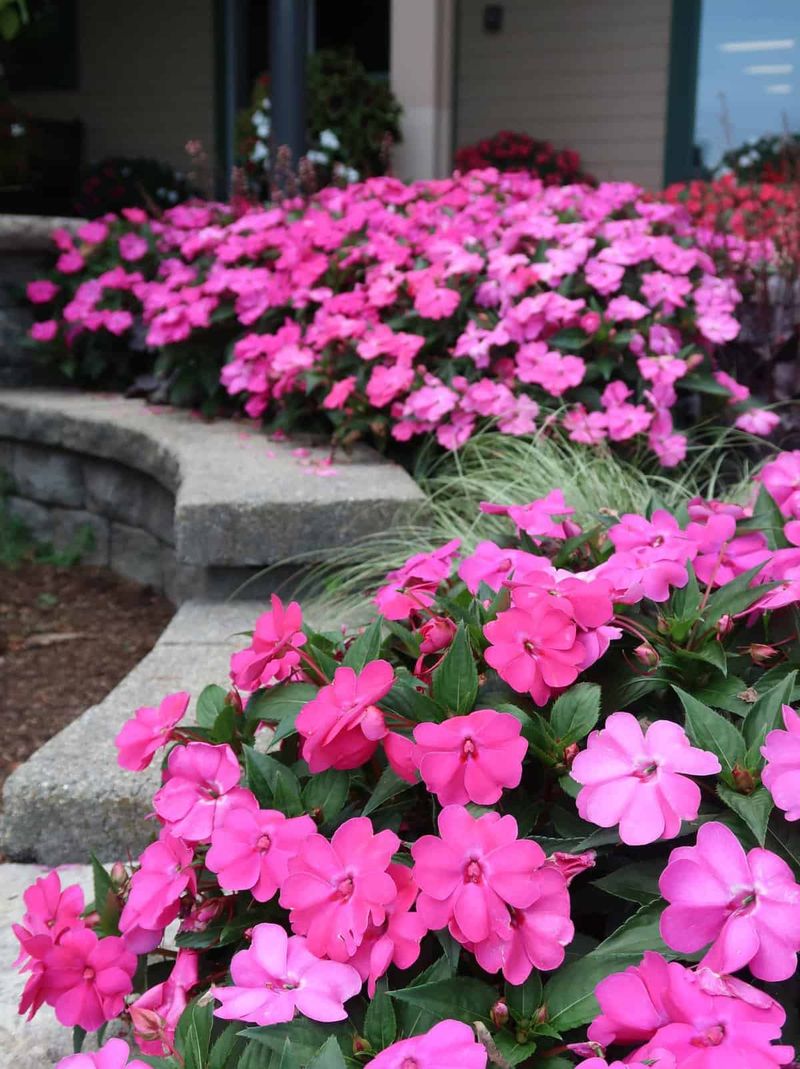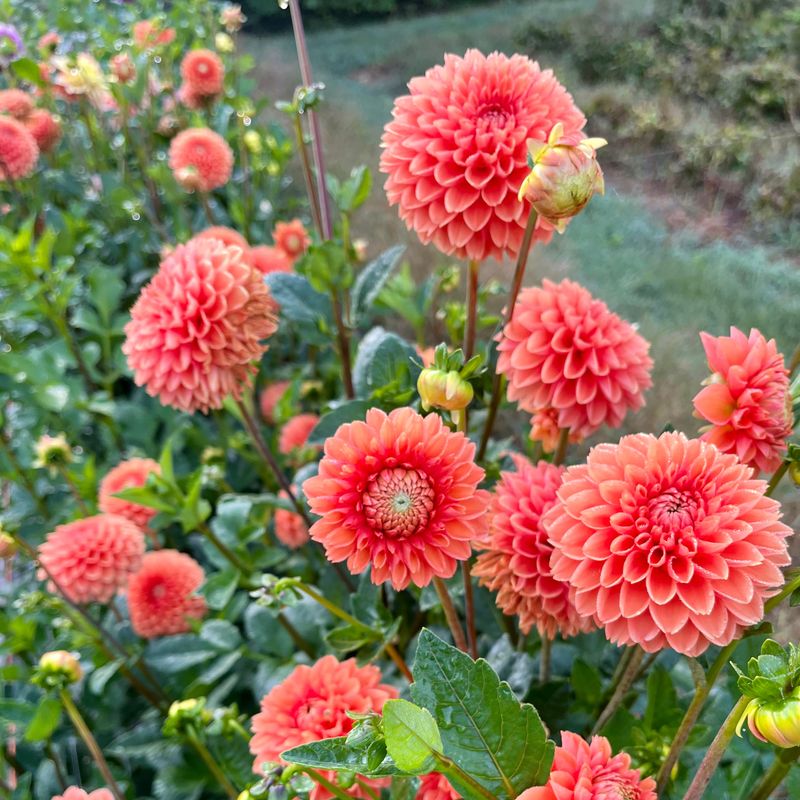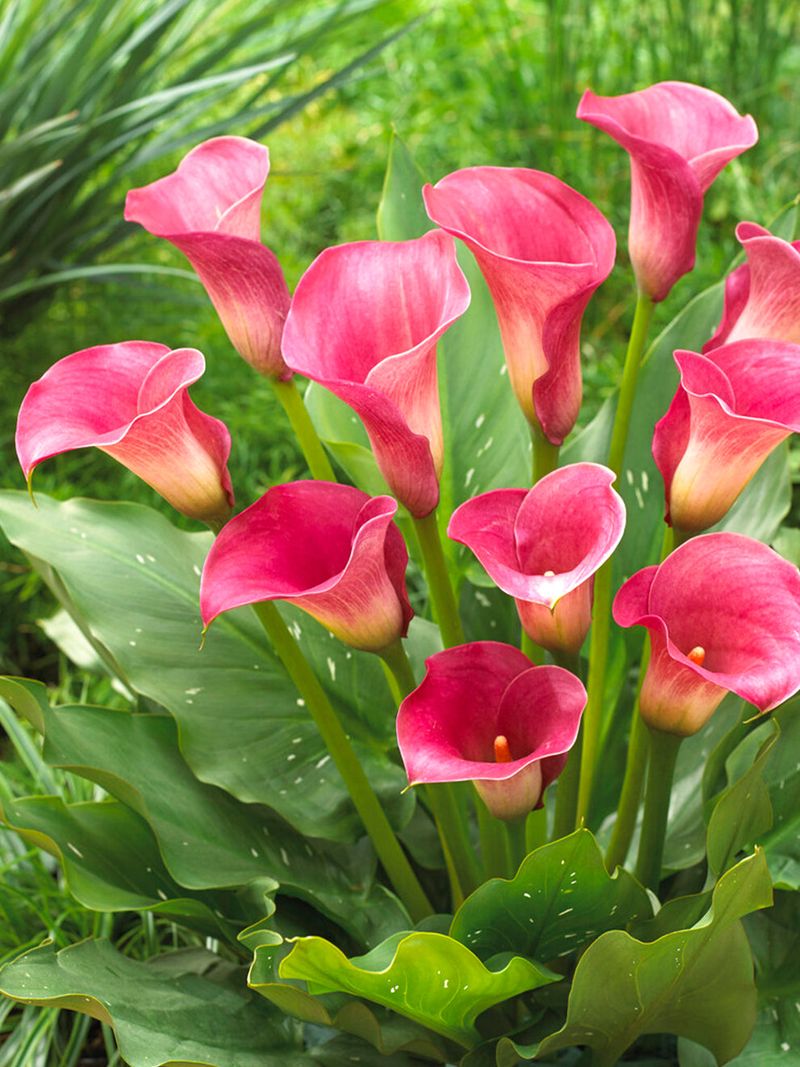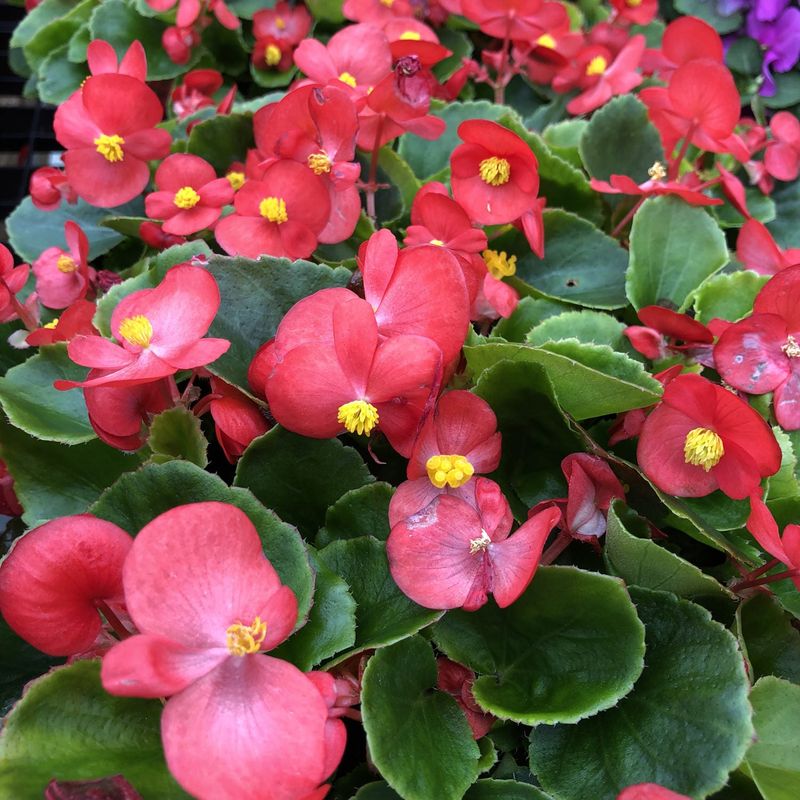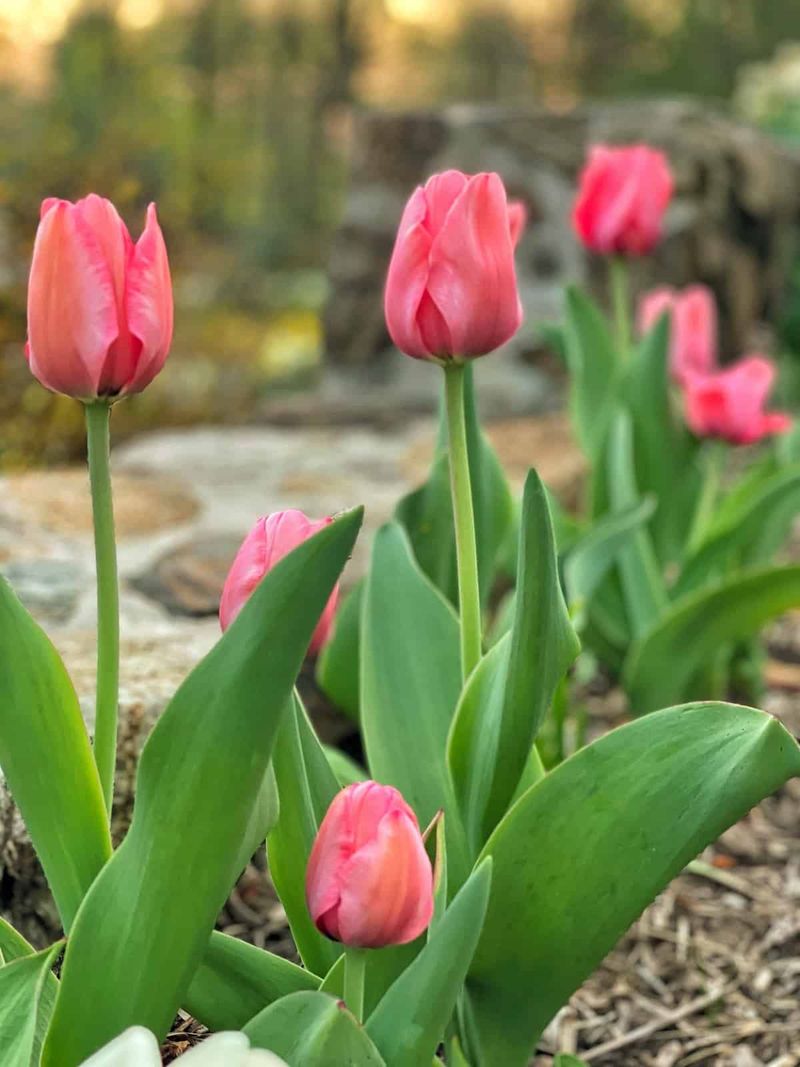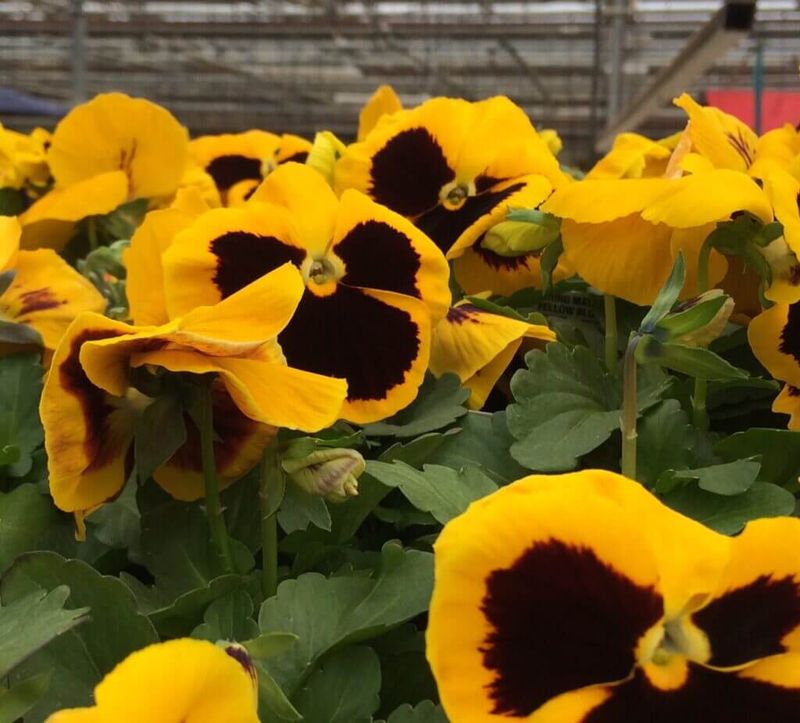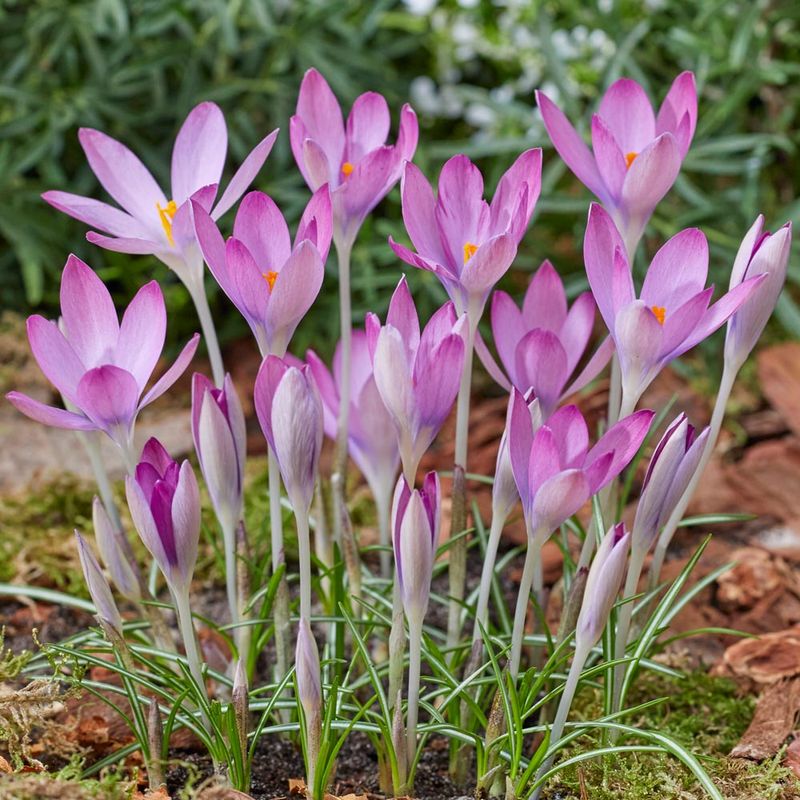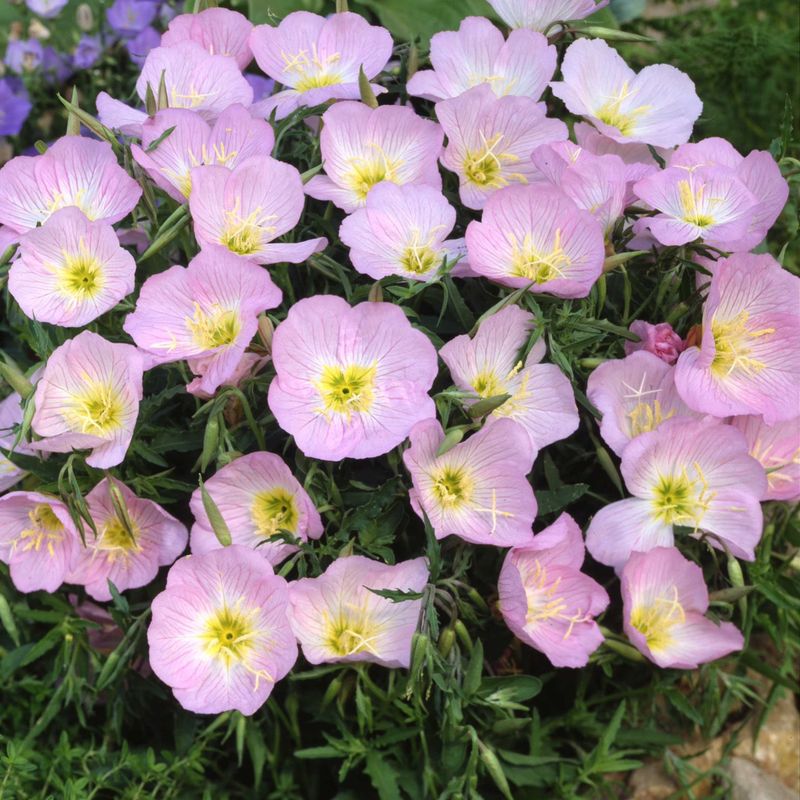Ah, April! The month when the garden truly comes to life, and I can already hear the buzz of bees and the flutter of butterfly wings.
There’s something magical about watching your garden transform into a haven for these creatures. They’re not just pretty faces. These pollinators play a huge role in keeping our gardens thriving.
So, whether you’re a gardening pro or just starting out, I’m here to share flowers that will turn your outdoor space into a buzzing, fluttering paradise.
Trust me, you’ll be mesmerized by the colors and the flurry of life they bring!
1. Bee Balm
Ever wished your garden could buzz with life? Bee Balm is your answer. These shaggy flowers in shades of pink, red, and purple are like magnets for bees and butterflies, drawing them in with their irresistible nectar.
Whether you’re sipping tea on your porch or tending your garden, you’ll notice the charming flutter of wings.
Planting Bee Balm is like sending out a party invitation to nature, ensuring a lively and buzzing garden experience.
2. Lavender
A garden without scent is like a story without words. Lavender is the aromatic superstar that bees and butterflies can’t resist.
Its calming fragrance is a treat for the senses and a beacon for winged visitors. You’ll find these creatures happily dancing from bloom to bloom, ensuring pollination while you enjoy the serene ambiance.
Lavender not only enhances garden beauty but also promotes biodiversity, making it an essential addition to any floral haven.
3. Salvia
Thinking of adding flair to your garden? Salvia delivers just that. These spike blooms in reds, blues, and purples are especially attractive to hummingbirds, who dart in for a sweet sip of nectar.
Their presence brings a splash of color and motion, creating a dynamic garden scene. Salvia’s ability to lure in these fascinating creatures while adding elegance to the garden makes it a must-have for any nature enthusiast.
4. Black-eyed Susan
Imagine a garden that feels like summer all year round. Black-eyed Susan’s golden-yellow blooms brighten any space and serve as a favorite landing spot for bees and butterflies.
Their daisy-like petals offer a classic charm, drawing in pollinators with ease. Choosing Black-eyed Susan means not only uplifting your garden’s aesthetic but also supporting crucial pollinators.
It’s a win-win situation for both gardeners and nature lovers.
5. Coneflower
I once stumbled upon a garden teeming with life, and at its heart were coneflowers. These sturdy blooms in pink and purple were the stars of the show.
Butterflies and bees seemed to be in a joyous frenzy, flitting from flower to flower. Coneflowers not only add a rustic charm but are also incredibly hardy.
They’re like a reliable friend, always there to ensure your garden remains a fresh hub of activity. Plus, their resilience makes them a gardener’s favorite.
6. Zinnia
Ever wanted a flower that’s as easy-going as it is attractive? With their wide array of colors, they’re like a festival in your garden.
Butterflies simply can’t resist their open blooms, making frequent visits. Meanwhile, bees are drawn to the abundant pollen.
Zinnias are the perfect choice for those looking to add a splash of color to their outdoor space. Plus, they’re low maintenance, which is always a bonus for busy gardeners.
7. Penstemon
Why settle for ordinary when you can have extraordinary? Penstemon stands out in any garden. These flowers are particularly appealing to hummingbirds, who find the nectar irresistible.
While you’re admiring their beauty, you’ll often find yourself questioning if such elegance is possible in your garden.
Penstemon proves that with the right choices, any garden can be transformed into a sanctuary for nature’s most delicate creatures.
8. Columbine
Ever notice how some gardens feel like a secret haven? Columbine brings that magic. These blooms attract hummingbirds and butterflies with their unique shape and colors.
Whether planted in clusters or as standalone stars, Columbine adds a mysterious flair. Their presence ensures your garden feels like a hidden paradise, teeming with life.
Columbine promises not just beauty but an enchanting experience that makes your garden unforgettable.
9. Hummingbird Sage
Sometimes, you come across a plant that seems to dance in the wind. Hummingbird Sage is one of those.
Its aromatic leaves and striking blooms are a hummingbird’s delight. These tiny birds, with their rapid wingbeats, find the sage irresistible.
And while they’re busy feasting, you’re left with a magical garden scene. Hummingbird Sage is a testament to how simple plant choices can invite elegance and life into any garden space.
10. Milkweed
In the world of gardening, some plants are unsung heroes. Milkweed is one such champion. This isn’t just any flower, but the lifeline for monarch butterflies.
Their larvae feed exclusively on milkweed, making its presence crucial. By planting milkweed, you’re not just adding beauty but playing a part in conservation.
The sight of monarchs fluttering about your garden is a gentle reminder of nature’s delicate balance, one that you’re actively supporting.
11. Lantana
Ever want to add a touch of the exotic to your garden? Lantana does exactly that. These colorful clusters are like sweet candies for bees and butterflies, drawing them in droves.
Their resilience in various climates makes them a favorite for many gardeners. With Lantana, your garden becomes a dance floor for pollinators.
Their presence adds a lively energy, transforming ordinary spaces into a tropical oasis. It’s a garden party you won’t want to miss.
12. Aster
There’s something about a garden that feels like a painting. Asters contribute to this effect with their starry blooms. I recall visiting a friend’s garden, where asters played a central role.
The butterflies and bees seemed to be in a constant state of joy, flitting from bloom to bloom. Asters provide a cool contrast to other flowers, ensuring your garden has depth and dimension.
Their presence is a surefire way to keep your garden lively and full of character.
13. Coreopsis
You ever noticed how some flowers seem to smile? Coreopsis is one of those. Their sunny disposition is mirrored in their ability to attract bees and butterflies.
These creatures can’t resist the cheerful blooms, ensuring your garden is always buzzing with activity.
Coreopsis offers an easy way to brighten up any space, making it a fantastic choice for both new and seasoned gardeners. It’s a classic garden favorite that brings joy to both humans and pollinators alike.
14. Phlox
Sometimes, a garden feels like a retreat. Phlox plays a big part in this, with its clusters of blooms that seem to invite serenity.
These flowers are a hit with butterflies and bees, who flock to them for their sweet nectar. By adding Phlox to your garden, you create a space that’s calming.
Their presence ensures your garden is not only a feast for the eyes but also a haven for pollinators. It’s the perfect blend of beauty and purpose.
15. Goldenrod
Ever wish your garden had a big personality? Goldenrod offers just that. Its tall blooms attract bees and butterflies in droves.
The sight of these creatures flitting about adds a touch of magic to any setting. Goldenrod is like nature’s invitation to a party, ensuring your garden remains lively and full of energy.
By planting Goldenrod, you not only enhance your garden’s beauty but also support the vital work of pollinators.
16. Lupine
You ever feel like your garden needs a touch of drama? Lupines deliver with their tall spires of blooms. These flowers are a favorite for bees and butterflies, who can’t resist their charm.
Planting Lupines means your garden will always be the center of attention, drawing in these vital pollinators. Their dramatic presence isn’t just for show.
They plays a crucial role in supporting the biodiversity of your garden. With Lupines, you’re making a choice for beauty and ecology.
17. Verbena
Some flowers just seem to have it all. Verbena, with its delicate clusters, is one such plant. It’s a hit with butterflies and bees, ensuring your garden stays lively and full of movement.
Verbena’s elegant blooms add sophistication, making them a perfect choice for any garden.
By planting Verbena, you create an ecosystem that supports pollinators while enhancing your garden’s aesthetic. It’s a win for both nature and garden enthusiasts alike.
18. Astilbe
I stumbled upon a garden that felt like a fairytale, and Astilbe was the star of the show, with its feathery plumes swaying in the breeze.
Bees and butterflies seemed entranced, flitting from flower to flower. Astilbe adds a touch of grace to any shaded area, creating a soft, inviting space.
Their presence ensures your garden remains a magical haven, providing both beauty and support for pollinators. With Astilbe, your garden will always feel like an enchanted retreat.
19. Foxglove
A garden should feel like an adventure. Foxglove, with its towering blooms, adds an element of surprise and wonder.
These flowers are a favorite for bees and hummingbirds, who find the tubular blooms irresistible. By planting Foxglove, you create a dynamic garden space that’s full of life and movement.
Their striking presence ensures your garden is always a focal point, attracting both pollinators and admiration from visitors.
20. Bee-Friendly Sunflower
When you think of happiness, do sunflowers come to mind? These towering giants are a bee’s paradise. Their large blooms are not only beautiful but packed with pollen, drawing bees in for a feast.
Planting Bee-Friendly Sunflowers means your garden will always have a cheerful, buzzing energy. They’re a staple in any garden looking to support pollinators while adding a touch of sunny optimism.
With their towering presence, they are both a visual delight and a crucial part of any eco-friendly garden.
21. Trumpet Vine
You ever wonder what makes a garden truly captivating? Trumpet Vine holds the answer. These tubular blooms are a magnet for hummingbirds, who can’t resist a sip of nectar.
Their climbing nature means they can transform any wall or fence into a living work of art. While you’re admiring their beauty, you might ponder what other secrets your garden holds.
Trumpet Vines ensure your space is always full of surprises, creating a dynamic and engaging garden environment.
22. Red Hot Poker
Ever seen a flower that looks like it’s on fire? Red Hot Poker is that flower. These striking blooms attract hummingbirds and bees, adding an exciting energy to your garden.
Their unique appearance ensures your garden is always the talk of the town. With Red Hot Poker, you’re not just planting flowers. You’re making a statement.
Their presence guarantees a lively and dynamic garden environment, captivating both pollinators and garden visitors alike.
23. Blazing Star
Some flowers seem to light up a garden. Blazing Star is one such bloom, with its spiky, colorful flowers.
Bees and butterflies can’t resist its allure, ensuring your garden remains a hub of activity. By planting Blazing Star, you create a space that’s lively and full of movement.
These flowers are a testament to the fact that gardens can be both beautiful and functional, supporting pollinators while adding a touch of drama. Blazing Star ensures your garden is anything but ordinary.
24. Fuchsia
A garden should feel like a dance. Fuchsia sets the stage for a lively performance. Hummingbirds and bees can’t resist these fancy flowers, ensuring your garden is always full of movement.
By planting Fuchsia, you create a dynamic space that invites both nature and admiration. Their unique shape and color provide a delightful contrast, making them a standout choice for any garden.
25. Petunias
In the world of gardening, some flowers are simply timeless. Petunias are that classic beauty. I once saw them cascading from a friend’s window box, attracting bees and butterflies with ease.
Their wide range of colors ensures they fit into any garden palette. Petunias are an easy choice for those looking to add color and life without much fuss.
Their presence is a testament to the fact that simplicity can be both elegant and effective in creating a garden that’s full of life.
26. Marigolds
Marigolds deliver with their underrated blooms. These flowers are a hit with bees and butterflies, who can’t resist their allure.
Marigolds are a great choice for those looking to add classy hues to their garden while supporting pollinators.
Their presence ensures your garden is always buzzing with life and energy. It’s a simple yet effective way to create a lively garden space that’s full of character and charm.
27. Daylilies
What makes a garden truly enchanting? Daylilies might hold the key. These blooms are not only beautiful but attract bees and butterflies with their sweet nectar.
As you watch the garden fill with life, you might wonder how such a simple flower can have such an impact. Daylilies are a testament to the power of simplicity and elegance.
They’re an easy choice for those looking to create a garden that’s both beautiful and buzzing with activity. It’s all about finding beauty in simplicity.
28. Geranium
Sometimes, a plant fails to live up to the hype. Geraniums are one such flower. Despite their beautiful blooms, they don’t attract many bees or butterflies.
Their scent, intended to repel pests, also deters these crucial pollinators. While they add color, they don’t contribute much to garden biodiversity.
Choosing Geranium means prioritizing aesthetics over ecology, which might not be the best choice for those hoping to support a lively, buzzing garden environment.
29. Impatiens
Not all flowers are created equal when it comes to attracting wildlife. Impatiens might catch your eye but not the attention of bees and butterflies.
These pollinators often pass them by, favoring other blooms with more abundant nectar. While Impatiens can brighten a shady corner, they don’t play a big role in supporting garden biodiversity.
If attracting buzzing visitors is your goal, you might want to explore other options that offer more to pollinators.
30. Dahlia
I once planted Dahlias hoping they’d be a hit with pollinators. Their stunning blooms promised so much, but the bees and butterflies seemed uninterested.
Dahlias, while beautiful, often don’t provide enough nectar or pollen to attract these creatures. They remind me of a flashy restaurant with no customers.
While they add visual appeal, they don’t contribute much to the garden ecosystem. If you’re looking to support bees and butterflies, consider complementing Dahlias with more enticing plants.
31. Calla Lily
A garden should be full of life, and some flowers don’t quite fit the bill. Calla Lilies are more about show than substance.
They don’t offer much to bees and butterflies, who often overlook them for more rewarding options. While they can add a touch of class to any garden, they’re not the best choice if you’re hoping to attract pollinators.
Calla Lilies are like a beautiful book with no words, failing to draw in the buzzing visitors you might desire.
32. Begonias
Sometimes, beauty isn’t enough to attract the right crowd. Begonias are a prime example. Despite their appeal, bees and butterflies often ignore them.
They don’t provide the nectar these pollinators are looking for. While Begonias can add a splash of color to shady spots, they don’t contribute much to the garden’s ecosystem.
33. Tulips
Tulips are the epitome of spring beauty, but they don’t do much for pollinators. With their stunning blooms, they’re more about aesthetics than ecology.
Bees and butterflies often pass them by, seeking flowers with more nectar. While Tulips can create a breathtaking display, they’re not ideal if you want a garden full of buzzing visitors.
They’re a bit like a pretty painting, adding beauty without contributing to the lively ecosystem you’re aiming for. Consider mixing them with pollinator-friendly options for a diverse garden.
34. Pansies
When it comes to attracting pollinators, not all flowers make the cut. Pansies, despite their charming faces, don’t draw in bees and butterflies.
Their lack of nectar means these creatures often overlook them. While Pansies can add cheerful colors to your garden, they don’t support the buzzing community you might desire.
They’re like a colorful show with no audience. If attracting pollinators is your goal, consider complementing Pansies with flowers that offer more to these vital visitors.
35. Crocus
Some flowers promise much but deliver little when it comes to attracting wildlife. Crocus might seem like a hopeful start to spring.
However, they often don’t provide enough nectar for bees and butterflies, who seek richer sources. While they add early color, they don’t contribute to a buzzing garden ecosystem.
Crocus are like a flashy headline with no story, failing to support the lively pollinator community. For a flourishing garden, consider pairing them with more enticing options.
36. Primrose
A garden full of life requires the right plants, and Primroses often miss the mark. While their early blooms are picturesque, they don’t offer much for bees and butterflies.
These pollinators often bypass Primroses for flowers with more rewarding nectar. While they can brighten shady garden corners, they don’t contribute to the lively ecosystem you’re aiming for.
Primroses are like a beautiful but quiet corner, lacking the buzzing activity that truly brings a garden to life.

